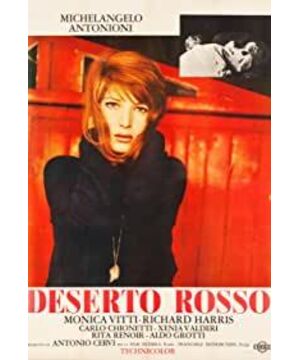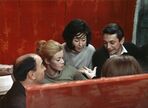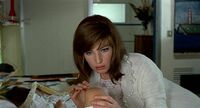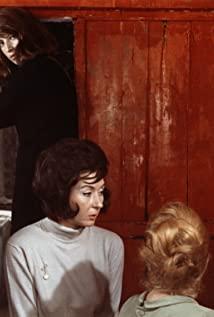Woman: "What can I do with my eyes? What do I see?"
Man: "You want to know what the eyes can see, and I want to know how to live, it's the same thing. "
Industrial
"Red Desert" is not An easy-to-understand movie, but compared to the film’s storyline, its colors and visual effects can be said to be unique at the time. Antonioni creatively uses color as an important film element to convey the emotions of the characters and create The atmosphere of the film was praised by critics as: "The first true color film in the history of film."
There have always been two explanations for the original intention of making this film. One is that Ferrara, the city where the director has lived since he was a child, is a heavy industry area, and the filming location is also the chemical plant area on the east coast of Italy near the port of Ravenna. He has been familiar with it since he was a child. The industrial area is roughly in It was developed only in the 1950s, and he has made many films there, including his first documentary. It was after seeing this industrial area that he had the idea of making this movie. Michelangelo Antonioni once said: "Compared with the same forest across the industrial zone, this is much more beautiful." After
World War II, people discovered natural resources such as oil and natural gas in the Po Delta. At the end of the 1950s, it had become a European petrochemical zone for the manufacture of synthetic rubber and chemical fertilizers. At the beginning of the film, the camera shot through the canal to capture the SAROM refinery and cooling tower. The color of the picture is darker than that of the whole film. The director used a lens filter and sprayed the ground and lawn into gray. The beginning of the film is a series of unfocused factory images, accompanied by electronic sound processing from Vittorio Gelmetti and sung by actor Vittorio Morandi. The music composed by Giovanni Fusco (he is Antonioni’s long-term music partner) makes the film images Paintings by Italian artist Mario Rossini and Italian modern art master Giorgio Morandi.
female
Second, it is because of Monica Witty, she plays Juliana in the film, she is also the queen actress of Antonioni. There is a saying that this movie originated from a mental crisis that happened to her. Both of these claims about the origin of "Red Desert" may be true, because the connection between industry and neurotic women in this movie has always been inseparable. The film embodies the side of social reality. It focuses on Italy in the emerging industries since the 1950s. This is also a completely female-centered film. Juliana's loneliness when facing her family and society is a desert of human heart, and the director puts this desert in red.
There are two bright red scenes in the film. The first one is the red cabin that starts at 00:45:45 in the film. In my opinion, it is actually a manifestation of men and women's emotions and carnal desires. Juliana told her husband that she wanted to have sex, but the husband touched other women. The red here is sensuality. The second part is the "Late Night Wharf" section where Juliana derailed at 01:49:40, which is generally considered to be the most experimental and artistic part of the film. The large area of red there is actually Juliana's inner helplessness and loneliness. Although Kollard Zeller can meet her physical needs, she still cannot resonate with her spiritually. Sadly, when a man thinks that only the body can comfort a woman, he is doomed to be fragile in this relationship. And ridiculous. Through the understanding of the eyes, you can know the difference between them.
At 01:24:34 of the film is a story narrated by Juliana, that is the only paragraph that is completely different from the style of the whole film. Antonioni said: "The main line is paused in this scene, as if the narrator’s eyes have temporarily left. This scene shows the reality Juliana yearns for and the distortion she sees.” It expresses Juliana’s many expectations, her desire to rest, and her desire to escape from the world in which she lives. It is worth mentioning that the story is set on a small island on the northeast coast of Sardinia. It is also famous for its pink beaches, but due to environmental protection considerations, the site was closed to swimmers in the 1990s.
At the end of the film:
Vario pointed to the chimney and asked: "Why is the smoke yellow?" Juliana said: "Because it is poisonous." Vario said again: "Birds that fly by will die." Juliana replied: "But now the little birds know, they won't fly over again. Let's go."
This may also be a compromise of the lonely Juliana to reality.
View more about Red Desert reviews








